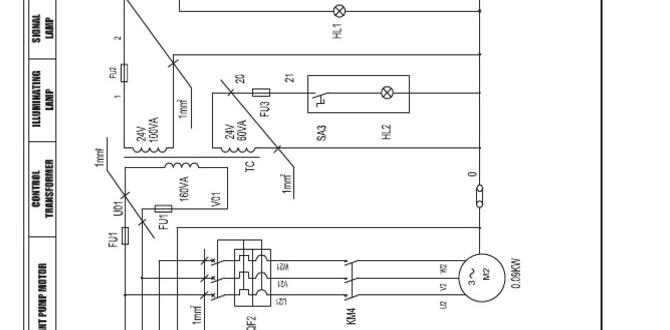A carbide end mill is essential for HDPE because it cuts cleanly, generates less heat, and resists melting, unlike softer bits, ensuring precise and smooth HDPE fabrication.
Working with High-Density Polyethylene (HDPE) can be tricky. It’s a fantastic material – tough, durable, and easy to clean. But when it comes to cutting it precisely, especially with a milling machine, beginners often run into problems. Chips can melt and re-weld, leaving a gummy mess, and the edges might turn out rough. This is where the right tool makes all the difference. Don’t worry; it’s not as complicated as it sounds! We’ll walk through why a carbide end mill is your best friend for HDPE and how to use it effectively. Get ready to achieve those clean, professional cuts you’ve been aiming for.
Why HDPE is Tricky to Mill
High-Density Polyethylene (HDPE) is a popular plastic for many reasons. It’s strong, impact-resistant, and has excellent chemical resistance. You’ll find it in everything from cutting boards and playground equipment to chemical drums and pipes. However, when you try to machine it, especially with a CNC mill, it presents some unique challenges.
The main issue is HDPE’s low melting point. As cutting tools rotate and create friction, they generate heat. Unlike metals that dissipate heat quickly, HDPE tends to absorb it. This heat can cause the plastic to soften, melt, and then effectively re-weld itself behind the cutting edge. This results in:
- Gummy, Messy Chips: Instead of clean chips, you get sticky, stringy material that clogs your flutes and can gum up your workpiece.
- Poor Surface Finish: Melted plastic doesn’t create a smooth edge. You’ll end up with a rough, uneven surface that looks unprofessional.
- Tool Loading: The sticky plastic can load up the cutting tool, reducing its effectiveness and potentially damaging the cut.
- Material Deformation: Excessive heat can warp or deform the HDPE sheet, ruining your part.
This can be incredibly frustrating for anyone trying to get a clean, accurate cut. You might think your machine isn’t capable, or that the material is just too difficult. But the truth is, with the right tooling, this problem is entirely manageable.
Introducing the Carbide End Mill: Your HDPE Solution
This is where the carbide end mill shines. When you’re milling HDPE, a standard high-speed steel (HSS) end mill often just doesn’t cut it – literally. HSS tools are softer and generate more heat. Carbide, on the other hand, is significantly harder and has much better heat resistance. This makes it the ideal choice for machining plastics like HDPE.
A carbide end mill is made from tungsten carbide, a very hard and dense material. This hardness allows it to:
- Cut Cleaner: Carbide stays sharp longer and provides a cleaner shearing action.
- Generate Less Heat: While friction is still present, carbide’s properties allow for faster chip evacuation and better heat dissipation compared to HSS.
- Resist Melting: Its high heat resistance means it’s less likely to get soft and melt the plastic it’s cutting.
- Achieve Smoother Finishes: The clean cutting action leads to significantly better surface finishes on your HDPE parts.
For HDPE, you’ll want to look for specific types of carbide end mills. Tools designed for plastics, often with high helix angles and polished flutes, are excellent. A common recommendation for effective HDPE milling is a “Onaindia Carbureide End Mill 1/8 Inch 10mm Shank Extra Long for HDPE Heat Resistant.” This specific type addresses several key needs: the 1/8-inch size offers fine detail, the 10mm shank provides good rigidity, it’s extra long for deeper cuts or reaching tight spots, and it’s explicitly designed to be heat-resistant for plastic machining.
Key Features to Look For in a Carbide End Mill for HDPE
Not all carbide end mills are created equal, especially when it comes to plastics. Here are the features that will make your machining of HDPE much smoother:
1. Material: Carbide is King
As we’ve discussed, carbide is the clear winner due to its hardness and heat resistance. Avoid HSS when working with HDPE. While HSS might be cheaper, the frustration and poor results will cost you more in the long run. Pure tungsten carbide is the best, but some carbide end mills are made with a carbide substrate coated with something like TiAlN (Titanium Aluminum Nitride) or TiCN (Titanium Carbonitride). For HDPE, an uncoated or polished carbide tool is often preferred as coatings aren’t always necessary and can sometimes add to friction.
2. Flute Count: Fewer is Often Better
The number of flutes (the spiral grooves on the cutting edge) matters. For plastics like HDPE, especially when dealing with potential melting:
- 2-Flute End Mills: These are generally ideal for plastic. They offer more space for chip evacuation, which is critical for preventing melting and re-welding. The larger chip gullets allow chips to clear the cutting zone quickly.
- 3-Flute or 4-Flute End Mills: These can work, but you need to be more cautious with your feed rates and speeds. More flutes mean less space for chips, potentially leading to more heat buildup and gumming.
For HDPE, starting with a 2-flute end mill is usually the safest bet to ensure good chip clearance.
3. Helix Angle: High Helix for Plastic
The helix angle is the angle of the flutes relative to the tool’s axis. For machining plastics, a high helix angle is highly recommended.
- High Helix (30-45 degrees): This steeper angle provides a sharper cutting action, similar to a knife. It helps shear the plastic cleanly, reducing friction and heat. It also promotes excellent chip evacuation by “lifting” the chips out of the cut.
- Low Helix (e.g., 0-15 degrees): These are more common for general metal cutting and can be less effective for plastics, potentially leading to more rubbing and heat generation.
4. Polished Flutes
End mills with highly polished flutes are a significant advantage when cutting plastics. The polished surface reduces friction and prevents the plastic from sticking to the tool. Think of it like a non-stick pan – the smoother surface lets the material slide off more easily.
5. Geometry: Single or Double Edge?
While most end mills have two cutting edges on their circumference, some specialized tools for plastics might use single-edge designs. For beginners, standard 2-flute end mills are most common and effective. What’s more important is the overall geometry – a sharp, clean cutting edge is paramount.
6. Shank Diameter and Length
The shank is the part of the end mill that goes into your collet or tool holder. A 10mm shank, as mentioned in the specific example, offers good rigidity and stability, which is important for maintaining accuracy. The length is also a consideration. An “extra long” end mill allows you to reach deeper into your workpiece or create features at a greater depth. However, longer tools are more prone to vibration and deflection, so you might need to adjust your speeds and feeds accordingly. For general HDPE milling, a standard length is often sufficient unless your project specifically requires deep cuts.
Essential Tools and Setup for HDPE Milling
Beyond the carbide end mill, a few other things will help ensure your success when milling HDPE:
1. CNC Milling Machine
You’ll need a CNC (Computer Numerical Control) mill. This can range from small desktop hobby machines to industrial-grade equipment. The key is that it offers precise control over the tool’s movement.
2. Collets and Tool Holders
These securely grip the end mill in your machine’s spindle. Ensure you have collets that match your end mill’s shank diameter (e.g., a 10mm collet for a 10mm shank) and are in good condition. A clean, well-fitting collet is crucial for precision and preventing tool runout.
3. Workholding
How you hold your HDPE to the machine bed is critical. HDPE can be slippery. Common methods include:
- Clamps: Use soft jaws or specialized plastic clamps to avoid marring the material.
- Vacuum Table: If your machine has one, a vacuum table is excellent for holding sheets firmly without mechanical pressure points.
- Double-Sided Tape: For thinner sheets and lighter cuts, strong double-sided tape can work, but ensure it’s strong enough to resist the cutting forces.
Ensure your workholding is robust enough to prevent the HDPE from shifting during the cut. Any movement will ruin your accuracy.
4. Cooling/Lubrication (Optional but Recommended)
While carbide is heat-resistant, a little help goes a long way. For HDPE, you generally do not want to use standard liquid coolants or lubricants meant for metal. These can cause some plastics to craze or become brittle. Instead, consider:
- Compressed Air Blast: A stream of compressed air directed at the cutting zone is often the best way to keep the material cool and blow away chips. Many CNC machines have built-in air blast systems.
- Misting Systems: Some specialized plastic-friendly misting coolants are available, but air is typically sufficient and safer for HDPE.
5. Dust Collection
Milling plastic creates fine plastic dust. It’s important to have good dust collection in place to keep your workspace clean and for health and safety. A shop vac connected to a dust shoe around your spindle is a good setup.
Setting Up Your CNC Mill for HDPE
Here’s a general guide to configuring your CNC machine for successful HDPE milling with a carbide end mill. These are starting points, and you’ll likely need to fine-tune them based on your specific machine, tool, and material thickness.
1. Spindle Speed (RPM)
This is how fast the tool spins. For HDPE and a carbide end mill, you generally want a moderate to high spindle speed. A good starting range is:
- 10,000 – 20,000 RPM
Higher RPMs can sometimes help reduce heat if chip evacuation is efficient. However, if you start to hear squealing or see melting, it’s too high or your feed rate is too slow.
2. Feed Rate
This is how fast the tool moves through the material. This is arguably the most critical setting for HDPE.
- Too Fast: The tool might chatter, miss material, or break.
- Too Slow: The tool rubs instead of cuts, generates excessive heat, and melts the plastic.
A good starting point for a 1/8-inch carbide end mill in HDPE might be:
- 15 – 30 Inches Per Minute (IPM) or 400 – 800 Millimeters Per Minute (mm/min)
You’re looking for a sound that is a crisp, slicing noise, not a squealing or rubbing sound. If you are getting stringy chips, your feed rate is likely too low for the spindle speed. If you hear rattling or chatter, your feed rate might be too high, or your setup isn’t rigid enough.
3. Depth of Cut
This is how deep the tool cuts in a single pass. Taking too deep a cut can overload the tool and the machine, leading to poor finish or tool breakage. For HDPE, it’s better to take lighter, shallower cuts.
- For a 1/8-inch end mill, aim for a depth of cut between 0.05 and 0.125 inches (1.2mm to 3mm).
For full-depth cuts (e.g., cutting all the way through a 1/4-inch sheet), you might need multiple passes.
4. Stepover
This is the distance the tool moves sideways between passes when doing pocketing or profiling. A smaller stepover results in a smoother surface finish but takes longer.
- For profiling (cutting the outside edge): A stepover of 50% of the tool diameter (i.e., 0.0625 inches for a 1/8-inch tool) is common.
- For pocketing: You might use a larger stepover (e.g., 70-80% of the tool diameter) if a perfect surface finish isn’t critical, or a smaller one for a smoother finish.
5. Chip Load
Chip load is a more advanced concept that relates spindle speed, feed rate, and the number of flutes to the thickness of the chip being removed. A target chip load for plastics with a carbide end mill is often around 0.002 to 0.005 inches per tooth.
You can calculate your ideal feed rate using this formula, derived from common CNC calculators:
Feed Rate (IPM) = Spindle Speed (RPM) × Number of Flutes × Chip Load (inches/tooth)
Example:
- Spindle Speed: 15,000 RPM
- Number of Flutes: 2
- Target Chip Load: 0.004 inches/tooth
- Feed Rate = 15,000 × 2 × 0.004 = 120 IPM
This is significantly higher than our initial suggested range. This highlights how important it is to start conservatively and listen to your machine and material. The “extra-long” nature of some end mills might necessitate slightly lower feed rates due to increased potential for vibration.
Step-by-Step Guide to Milling HDPE with a Carbide End Mill
Let’s walk through the process. Imagine you’re cutting a simple shape out of a sheet of HDPE using your CNC mill and your trusty 1/8-inch carbide end mill.
Step 1: Prepare Your Design
Create your CAD (Computer-Aided Design) model of the part you want to cut. Then, use CAM (Computer-Aided Manufacturing) software to generate the toolpaths. Ensure your CAM software is set up to recognize the diameter of your end mill (1/8 inch or 3.175mm) and that you’ve selected the correct tool type (end mill, carbide).
Step 2: Secure the HDPE Sheet
Bolt or clamp your HDPE sheet firmly to the bed of your CNC mill. Make sure it won’t move during the entire milling operation. Use soft-jaw vises, edge clamps, or double-sided tape that won’t damage the plastic surface if it will be visible.
Step 3: Install the End Mill
Insert your carbide end mill into the collet and tighten it securely in the spindle. Ensure the shank is properly seated. If you have an “extra long” end mill, be mindful of how much of the shank needs to be in the collet for secure gripping.
Step 4: Set Your Zero Points (Work Origin)
This is crucial for accuracy. You’ll need to tell your CNC machine where the ‘0,0’ point of your design is located on the workpiece. Use your machine’s probing system or manually jog the spindle to touch off on the material’s surface and edges to establish your X, Y, and Z origins.
Crucially, establish your Z-zero on the top surface of the HDPE. This ensures the depth of cut programmed in your CAM software is relative to the actual surface you are cutting.
Step 5: Load and Run the G-Code
Load the G-code file generated by your CAM software into your CNC machine’s controller. Double-check the code for any obvious errors, especially in the feed rates and depths of cut.
Step 6: Perform a Dry Run (Optional but Recommended)
Before cutting into the material, run the program with the spindle off. This allows you to watch the toolpath and ensure the machine isn’t going to crash or move unexpectedly. This is especially useful if you’re using an “extra long” tool to check for clearance issues.
Step 7: Start the Cut with Air Blast
Turn on your compressed air blast system (if you have one) before the spindle starts. Then, start the spindle and begin the cutting process.
Step 8: Monitor the Cut
Watch and listen carefully! Pay attention to:
- Chip Formation: Are they small, clean chips or long, stringy, melted ones?
- Sound: Is it a crisp cutting sound or a high-pitched squeal/rubbing sound?
- Vibration: Is the machine or tool shaking excessively?
- Melting: Is the plastic getting gummy around the cutter?






